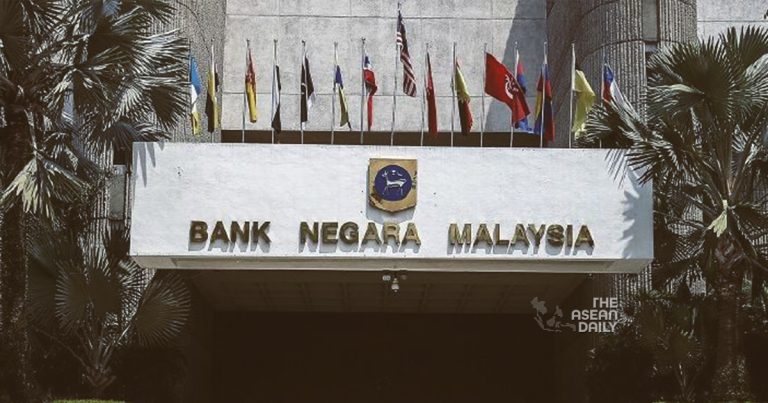7-7-2023 (KUALA LUMPUR) Bank Negara’s new governor has chosen to keep the central bank’s monetary tightening on hold, a decision that comes as a relief to borrowers and amid concerns of slower economic growth and public pressure.
The decision to retain the overnight policy rate (OPR) at 3%, as expected, follows the recent decisions by central banks in Indonesia and the Philippines to keep borrowing costs unchanged.
The Finance Ministry welcomed Bank Negara’s uncommon move, expressing support for the decision to maintain the OPR.
The decision to keep the OPR unchanged is largely driven by Malaysia’s falling inflation, which hit a one-year low in May, and concerns over an anticipated economic slowdown in the second half of 2023.
Economist Geoffrey Williams noted that the unchanged OPR is beneficial for borrowers and has no significant downside for savers. However, he mentioned that savings rates and retail fixed-deposit rates remain low, with recent rate hikes having minimal impact on savers.
The benchmark interest rate of 3% is already at pre-pandemic levels. The Monetary Policy Committee (MPC), led by Governor Datuk Shaik Abdul Rasheed Abdul Ghaffour, stated that the current OPR level is slightly accommodative and supportive of the economy.
While some economists believe that there may be one more rate hike of 25 basis points (bps) to 3.25% later this year, major central banks like the Federal Reserve (Fed), Bank of England, and European Central Bank have signaled their intention to continue raising rates to combat persistent inflation.
Bank Negara has already raised the OPR by 125 bps since May 2022, gradually increasing it from 1.75%.
Socio Economic Research Centre Executive Director Lee Heng Guie believes that the risk of another rate hike is relatively low. He considers the current OPR level to be appropriate, with the real interest rate turning positive after the hike in May. Additionally, Bank Negara’s latest statement suggests a somewhat positive outlook on the economy.
MIDF Research predicts that Bank Negara is likely to raise the OPR to 3.25% by the end of the year, citing a stronger-than-expected domestic economy. The research house also mentioned the possibility of optimizing monetary tools by normalizing the statutory reserve requirement (SRR) from 2% to 3% this year. However, any decision regarding the SRR will depend on the stability of economic growth, the pace of price increases, and further improvements in macroeconomic conditions.
The Finance Ministry stated that the decision to maintain the OPR aligns with global economic developments and the stable inflation rate in Malaysia, which has shown a downward trend. The government remains confident that the Malaysian economy will continue to grow in 2023, supported by declining unemployment rates, increased economic activities, and tourism.
Prime Minister and Finance Minister Datuk Seri Anwar Ibrahim recommended that banks provide restructuring and rescheduling facilities for troubled loans, demonstrating awareness of the difficulties faced by individual borrowers and small and medium enterprises.
The MPC emphasized its commitment to monitor domestic inflation, growth outlook, and ongoing developments. While exports have been affected by slower external demand, growth for the remainder of the year is expected to be driven by resilient domestic demand, favorable labor market conditions, rising tourist arrivals, and continued progress in infrastructure projects.
The MPC also highlighted that while headline and core inflation have eased, risks to the inflation outlook remain dependent on factors such as persistence in core inflation, changes to domestic policy on subsidies and price controls, and global commodity prices and financial market developments.
According to Williams, the decision to maintain rates is appropriate, as it aligns with maintaining inflation close to the long-term average of just under 2%. He believes this decision will have a positive impact on all sectors of the economy, instilling confidence and stability and allowing policy attention to focus on long-term structural issues.
Regarding the exchange rate, the ringgit has weakened against the US dollar since February. MIDF Research pointed out that the widening gap between the OPR and the US federal funds rate (FFR) is contributing to the strong US dollar. However, Williams stated that the ringgit has stopped depreciating and is expected to improve throughout the year based on fundamentals.
Lavanya Venkateswaran, OCBC Bank’s senior Asean economist, anticipates that Bank Negara will maintain the OPR unchanged for the remainder of the year. She believes that while Bank Negara is more positive about the growth and inflation outlook, it remains cautious due to external factors, such as the stance of global central banks, and domestic factors, including persistent core inflation pressures and potential changes to the government’s subsidy policies.




